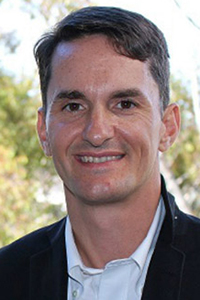Hyperactivity in Two Wide-Ranging Neural Networks is Discovered in Schizophrenia Patients
Hyperactivity in Two Wide-Ranging Neural Networks is Discovered in Schizophrenia Patients

A new study of 139 people with schizophrenia has discovered widespread hyperconnectivity in neural networks that span a number of key brain regions. The affected regions include those involved in perception, attention, and other higher-order cognitive functions.
Hyperconnectivity refers to a level of signaling among neurons that is higher than levels typically seen in healthy control subjects.
A research team led by Gregory A. Light, Ph.D., a 2013 BBRF Independent Investigator and 2006 and 2003 Young Investigator at the University of California, San Diego, used a technology called electroencephalography (EEG) to measure brain waves across a broad spectrum of frequencies in the 139 schizophrenia patients and in 126 unaffected people who served as controls.
The team also included David L. Braff, Ph.D., 2014 BBRF Lieber Prize winner and 2007 BBRF Distinguished Investigator; and Yash Joshi, Ph.D., a 2018 BBRF Young Investigator.
The study was distinguished from a number of past EEG studies that have observed distinctive brainwave patterns in schizophrenia. Rather than look at patterns generated by neural activity while subjects were performing a task or responding to a particular stimulus, Dr. Light and colleagues focused on patterns generated while the brain is in a resting state. Resting-state EEG patterns have their own characteristic signatures, showing baseline neural activity when a person is at rest and relaxed.
Participants in the study were placed in comfortable chairs in a quiet room and instructed to relax but keep their eyes open. EEG recordings of different “bands” of neural activation, caused by neural oscillations that range from very slow to very fast, were recorded in each subject in sessions lasting 5 minutes. Brainwave patterns are detected by recording from electronic sensors placed on the scalp.
The team’s results, published in the journal Frontiers in Psychiatry, identified widespread patterns of hyperconnectivity in schizophrenia patients compared with controls, in networks that involved the frontal, temporal, and occipital regions of the brain.
Specifically, the team identified two primary abnormalities in resting-state networks. The first involves connections between an area deep in the brain called the calcarine sulcus with an area covering about one-third of the brain's frontal lobe and a portion of the temporal lobe. The second network involves part of the cingulate cortex and the auditory cortex.
Among the potential implications of these results, the researchers noted, were that “patients may show abnormal excessive simultaneous activation of various perception-related brain regions.” This abnormal activation, they said, “may ultimately contribute to clinical symptoms such as hallucinations and delusions” as well as problems assessing the salience, or relative importance, of incoming sensory information.
The researchers encouraged future studies aiming to confirm the observed brainwave patterns and relating them to specific pathological processes in schizophrenia. Such studies should be randomized control trials, they said, and should try to control for the potential impact of medications that patients take, which can differ considerably among individuals. It would also be important, they said, to study whether the observed EEG patterns can also be seen in high-risk individuals prior to disease onset, as well as in those who have recently experienced a first episode of psychosis, which usually marks the beginning of schizophrenia.
If validated in future studies, the team said, the resting-state EEG patterns they detected might be useful as biomarkers for schizophrenia.



